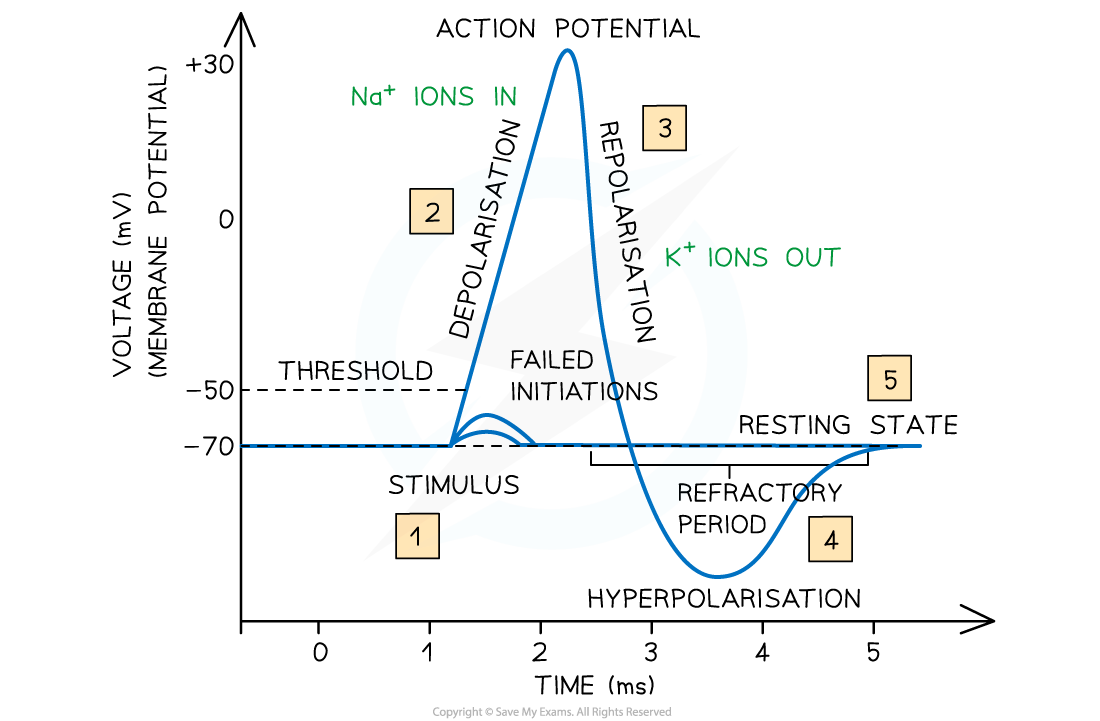- 翰林提供学术活动、国际课程、科研项目一站式留学背景提升服务!
- 400 888 0080
IB DP Biology: SL复习笔记6.5.4 Skill: Neurones & Synapses
Analysis of Oscilloscope Traces
- It is possible to measure membrane potentials in neurones by placing electrodes on each side of the membrane
- A membrane potential is the difference in charge between one side of a membrane and the other, sometimes described as the potential difference, or the voltage
- The membrane potential can then be visually represented and displayed using an oscilloscope
- An oscilloscope is a type of electronic test instrument that graphically displays varying signal voltages
- The display produced is like a graph with time in milliseconds on the x-axis and the membrane potential in millivolts on the y-axis
How to analyse oscilloscope traces showing resting potentials and action potentials
- If there is a resting potential, a straight, horizontal line should be shown on the display screen of the oscilloscope at a level of -70 mV
- If an action potential occurs a spike, rising up to a maximum voltage of between +30 and +40 mV, should be shown on the display
- The rising phase of the spike shows depolarisation
- The falling phase of the spike shows repolarisation
- Often not shown on an action potential graph is the gradual rise in membrane potential just before the membrane rapidly depolarises
- Before threshold potential is reached, only a small number of sodium channels in the membrane are open, so the membrane depolarises slowly, but when the threshold is reached many more sodium channels open
- Instead of repolarisation causing the membrane potential to return immediately to the normal resting potential of -70 mv, the trace often shows a short period of hyperpolarisation
- This is when the membrane potential briefly becomes more negative than resting potential

An example of an oscilloscope trace showing resting potential and an action potential
转载自savemyexams

最新发布
© 2025. All Rights Reserved. 沪ICP备2023009024号-1









